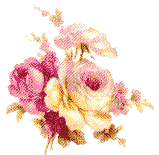
Background & Experience
Barbara Duhl-Emswiler has been performing on the Celtic harp for over 12 years. Her repertoire is based on traditional Celtic music, but also includes original compositions, romantic contemporary selections, and traditional wedding favorites.
She is particularly drawn to the music of Scotland, and has traveled several times with the harp in Scotland, performing informally and collecting music. Barbara is the recipient of several Scottish music awards, including the National Scottish Harp Championship in 1988 and the U.S. National Professional Championship in 1989. She utilized her 1988 study trip award for travel to the Shetland Islands to study with the well-known Shetland fiddler & composer, the late Dr. Tom Anderson. Tom spent much of his life collecting traditional Shetland music and helping to keep the tradition alive by teaching fiddle in the schools.
Currently a resident of the Seattle area, Barbara is willing to travel to your event whether in the Pacific Northwest or beyond.
Barbara Duhl-Emswiler - featured in a series of Victorian Parlour Concerts held at The Cabbage Rose Inn, Flemington, New Jersey. Prior to moving to Seattle in 1992, she lived in rural Hunterdon County, New Jersey where she performed at numerous festivals & private events in that area as well as at festivals in Pennsylvania, Ohio, New Hampshire & Virginia.
Barbara has provided music for over a hundred wedding ceremonies and receptions, as well as corporate & business functions, private parties, and concerts. References are available - please ask.
Thank you for being such an important part of our wedding . . . The harp sounded absolutely heavenly in the chapel and so light & happy during the cocktail hour. . . D & H
. . . your harp playing was the loveliest of touches at our daughter's wedding . . . your music added to the dining hour's pleasure immeasurably. . . Mr. & Mrs. J. R.
Your beautiful Celtic harp created a wondrous mood for our first Dinner Auction. Such a beautiful evening was deserving of your very special sound. . .
Exec. Director, Hunterdon Heritage Conservancy (NJ)

About the Celtic Harps of Mareel
Barbara plays both the ancient Celtic wire harp and the more recent nylon-strung instrument. The two instruments require different playing techniques, and the contrast in sound can be used effectively for different styles of music. Both instruments differ from the modern concert harp in that the concert harpist uses foot pedals to alter the pitch of strings to achieve semitones. The older instruments had no mechanism for doing this, and hand levers on each string of the modern Celtic harp are employed to accomplish it.
Aside from concert work, unless the wire-strung harp is specifically requested, Barbara performs on the neo-Celtic harp, since it is closer to what people generally have in mind when they imagine harp-sounds. This instrument is a 5-octave Salvi Renaissance, standing about 5 ft. tall and a deep walnut color. This harp has internal pickups for amplification, and is well suited for weddings, receptions, and outdoor events.
Her small wire-strung lap harp was made by Phil Boulding of Magical Strings. The wire harp has long-ringing bell-like tones and demands simplicity in the musical arrangements. It is well suited to some of the old music, such as pipe marches, laments, and early Norse-derived Shetland fiddle music, all of which make use of an ornamented melody against drone notes. The nylon-strung instrument has a wider tonal range, and is as effective for quick, bright dance tunes as for song-airs and tone-poems evocative of sea mist and heathered moorland.

To hear the music of Mareel
A demonstration tape is available, containing samples of both harps playing several representative Celtic selections. Even better is to plan a time to hear the harps in person, or even on the phone. Especially for weddings, the music of Mareel is planned with the client to reflect their preferences.
To request a demo tape or schedule a meeting, contact Barbara Duhl-Emswiler P.O. Box 1707 Issaquah, WA 98027 425-235-7087
copyright 2002 Barbara Duhl-Emswiler



